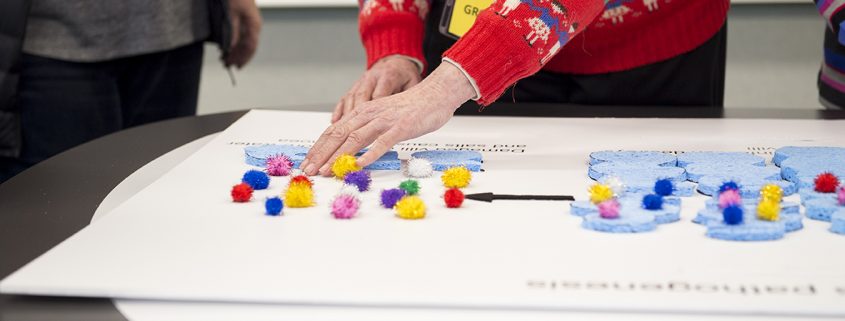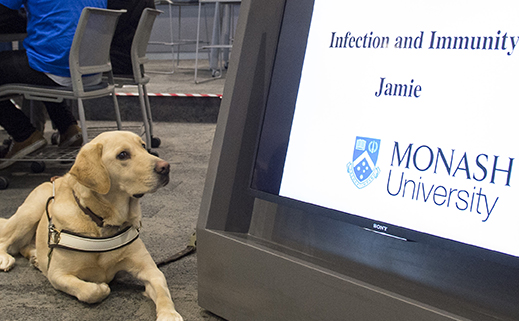Sensory Scientific Showcase brings infection and immunity research to life for low vision community
Monash University recently opened its doors to the low vision community with an inaugural Sensory Scientific Exhibition and Discovery Day. Held on May 31 to coincide with the end of Macula Month, over 80 attendees had the opportunity to explore the world of immunity and infection through interactive exhibits specifically designed for a low or no vision audience.
This innovative event was conceived by Professor Jamie Rossjohn, ARC Australian Laureate Fellow and Head of the Immunity and Infection Program of the Monash Biomedicine Discovery Institute (BDI). “I thought it would be great for us to take the time to talk about what we do and make sure that it’s completely accessible for people who are blind or have low vision,” said Professor Rossjohn.
Led by Professor Rossjohn and Dr Gabby Watson, researchers from the BDI Infection and Immunity created a range of accessible activities and displays to highlight their exciting research. Artist in residence, Dr Erica Tandori, collaborated with the Rossjohn lab to create a collection of tactile materials and models that detail aspects of vaccination, the evolution of flu viruses, and the process of how our bodies recognise pathogens.
From experiencing the different smells of microbes, using the lab tools of a superbug researcher and being immersed in the 360-degree CAVE 2, visitors took part in a range of discovery activities engaging the full range of senses.
Genie Lim bought her two young sons from Mount View Primary School to take part in the half-day event. “I’m so proud the university is making an effort to engage with the outside community” she commented.
“Events like this open up the university and my kids are now saying they want to come here! It’s really inspiring – we hope you run this every year.”
The enriching event was enjoyed by attendees of all ages, and the Monash Biomedicine Discovery Institute looks forward to expanding on the event’s success in the future.



